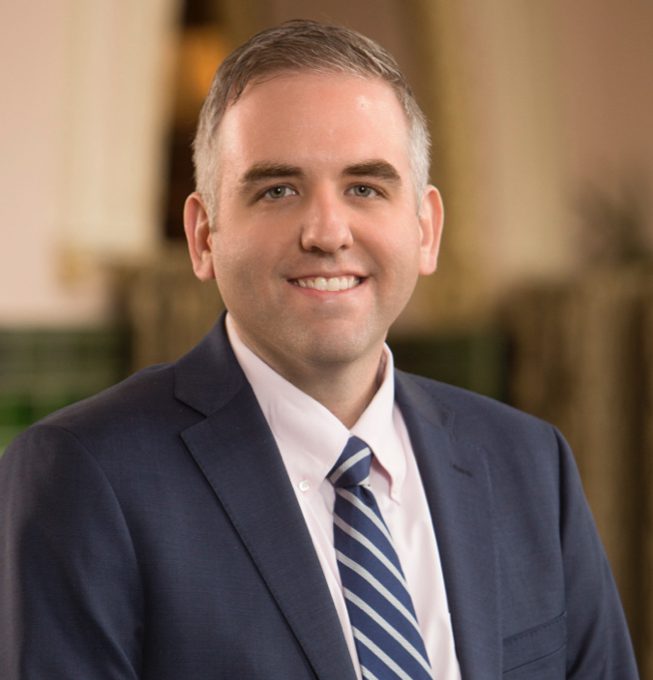May 16, 2023
Safe Withdrawal Rates

How much can you spend in retirement over your lifetime without depleting your portfolio? In this edition of Buckingham Weekly Perspectives, Chief Investment Officer Kevin Grogan answers this common question by exploring the factors that impact your portfolio, the three phases of retirement, the 4% rule of thumb and Buckingham’s deep dive approach.
Transcript:
Kevin: One of the more common questions we get from new clients, particularly new clients that are already retired, is how much can I spend in retirement without depleting my assets over the course of my lifetime? And it's totally understandable that this is a very common question because it is number one, so important but also number two, it's a pretty difficult question to answer because there are a lot of unknowns that go into determining how much you can spend in retirement. And so, I'll tackle two of those unknowns today and talk a little bit about some of the rules of thumb that have developed over time, and also talk about how Buckingham addresses that question with our clients.
How much can you spend in retirement without depleting your assets?
Kevin Grogan: First up on our list is that the age at which required minimum distributions is changing yet again. Not too long ago, RMD started for most people at age 70 ½. But as part of the original SECURE Act in 2019, that age was pushed back to age 72. Well, for those who turned 72 after 2022, it's pushed back yet again; first to age 73, and then in 2033, it will be further pushed back again to age 75. So, in just a few short years, it will go from 70 ½ to 72, from 72 to 73 and ultimately all the way to 75.
Unknown #1: How long will you live?
Kevin Grogan: And so, the first big unknown is you don't know how long you're going to live in retirement.
Unknown #2: How will the market perform over the course of your lifetime?
Kevin Grogan: And so that's obviously a huge factor in determining how much you can spend in retirement. And then the second kind of big unknown is that you don't know what the returns of the market and the returns of your portfolio will be over the course of your retirement.
Actuarial data provides an estimate of a person’s lifespan.
Kevin Grogan: So, tackling that first unknown, we can actually look at some population level data on that question and look to see how long people actually live. So, looking at the slide I have pulled up for this video, it looks at actuarial level data for a 65-year-old person or 65-year-old couple, and so I know there’s lots of numbers on the slide. So, feel free to pause the video if you want to really dive into the different numbers, but these are the odds of someone who is 65-years-old and the odds that they will live to a particular age. And so, there's three bars for each age. The first one is for a female, second for a male and then the third is for a married male/female couple with the odds that at least one member of that couple will live to that age. And so, where I'd really focus your attention is the age 90 and 95-year sections of the chart and I think this is often surprising to folks. When I work with clients, very often they somewhat underestimate the odds that at least one member of the couple will live into their 90s and the odds are I think higher than most people think. So, if you look at say age 90, there's roughly a 50/50 shot that if you're a healthy 65-year-old couple that at least one of you will live to your 90s; it's a one in five chance that at least one of you will live to age 95.
How long should you plan for your portfolio to last?
Kevin Grogan: So, in terms of thinking about how long to plan for in retirement, we would say you want to plan until at least 90, maybe age 95, for your retirement. So, plan on the portfolio lasting a very long time is the main message I would share because of the wonderful advances we've seen in medicine over the last several years.
How much will your portfolio return?
Kevin Grogan: And so that's the first unknown, and the second unknown is what will the portfolio return. And the way academics have tried to tackle this question is by looking at what's called safe withdrawal rates. So, a safe withdrawal rate is looking for an amount that that retiree can pull from their portfolio without depleting it and really the first big study in this area was done by some professors at Trinity University. So, this is often referred to as the Trinity Study and essentially what they did is they looked back through time at the worst possible year to retire from a return point of view, and looked at what was the most a retiree could withdraw in the worst year to retire. And so, it turns out the worst year for retirement was in the mid 1960s, around 1965, and the most a retiree could pull from their portfolio was about 4%.
The 4% rule of thumb.
Kevin Grogan: And so, kind of the way to interpret that is if you had said a $1 million portfolio and retirement, you could withdraw $40,000 in year one and then adjust that each year for inflation going from there. So, it's not a static $40,000 every year, it adjusts for inflation each year. And that was what is referred to, and still referred to today, as the 4% rule; that's a reasonably safe amount that you can withdraw from your portfolio and still be okay in retirement.
How does Buckingham build upon that industry standard?
Kevin Grogan: And so, I think that this rule of thumb is as good as it goes, but for clients that work with Buckingham, we do dive a little bit deeper and go beyond kind of a simple rule of thumb, along a couple of different dimensions. First, in our experience in working with clients, we know that withdrawal rates really aren't static throughout time. So, what we observe with our client base is really sort of three phases of retirement so that the first phase - and again the ages here will be different for each person - but through roughly age 75 we think of as the more active section of retirement where there's a lot more travel happening, a lot more discretionary expense. Spending will tend to be higher in the earlier years of retirement than it will be later. And then you kind of move into a second phase call it from age 76 through 85, which we’re kind of calling here a transition phase where there's less travel, people aren't as healthy. They just don't really want to travel as much as they did and kind of thinking back to those longevity slides a lot of times; the couple likes to travel together. But if one spouse gets into poor health or unfortunately passes away, then the surviving spouse normally doesn't want to travel as much as they did prior, so all these things are what we observe. And then the last phase is what I'm calling here the kind of passive phase where you see sort of spending start to tick back up again near the end of life due to health expenses. And you can see this in not just in sort of anecdotal experience with our clients, but in sort of consumer survey data that you can look at across the whole population. You tend to see a greater percentage of spending go towards health care near the end of someone's life, which is intuitive. It makes sense that would be the case. And so, when we're doing planning for clients, we'll take these things into account. We won't assume necessarily a consistent, constant spending rate over the course of their retirement. And then we'll also on the return side of the equation not just look back at historical returns. We'll try to simulate out potential future returns based on where prices are today. So, we'll try to dive a bit deeper than the rules of thumb, but I do think the rules of thumb are decent if you're just kind of looking for a rough guide or sanity check in terms of what you're spending in retirement. If you do have any questions on anything I've covered, please don't hesitate to reach out to your advisor or click the link in the description below.
If you have any questions please feel free to drop us a note: buckinghamstrategicwealth.com/contact-us
Category
RetirementContent Topics
About the Author

Kevin Grogan
Chief Investment Officer



